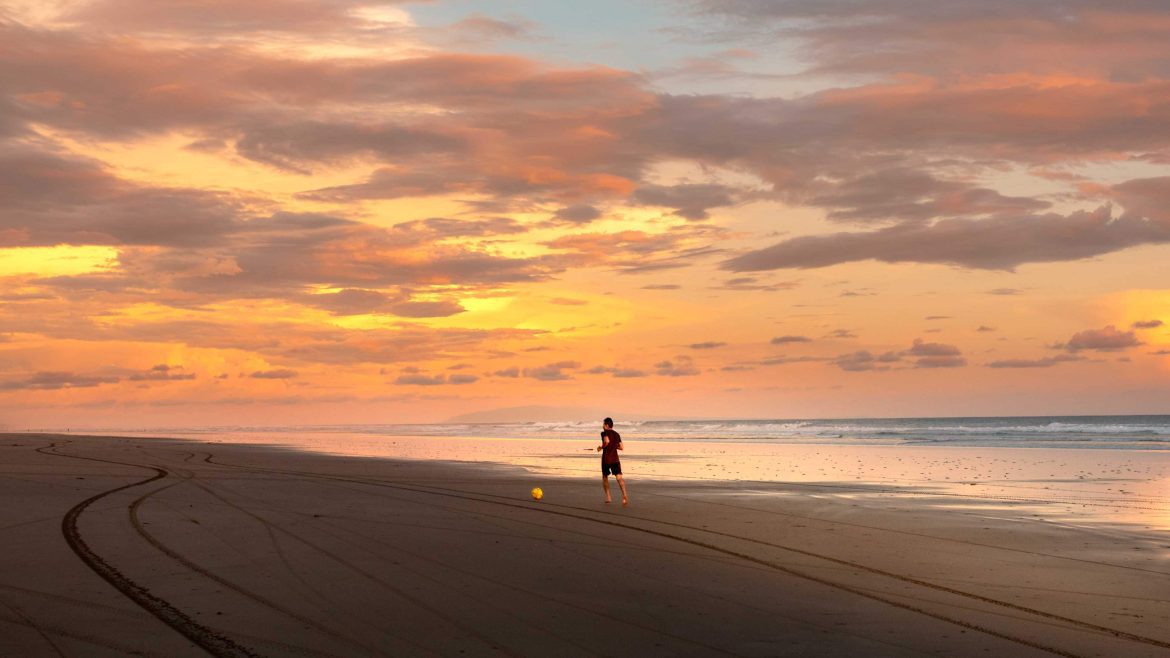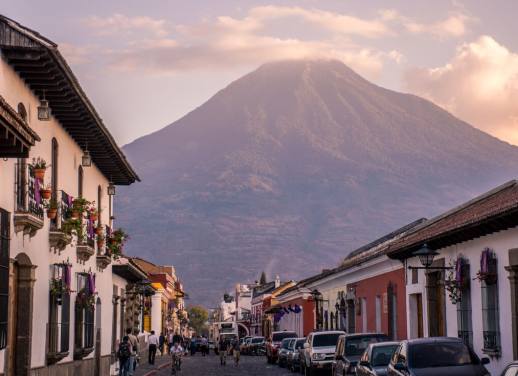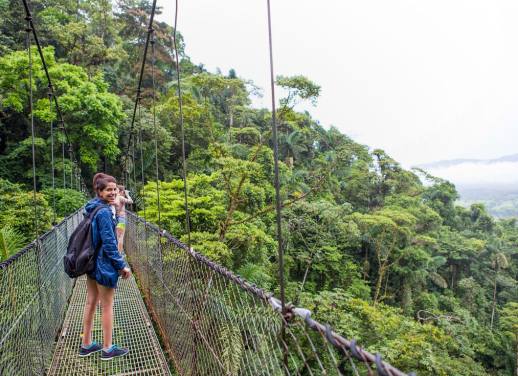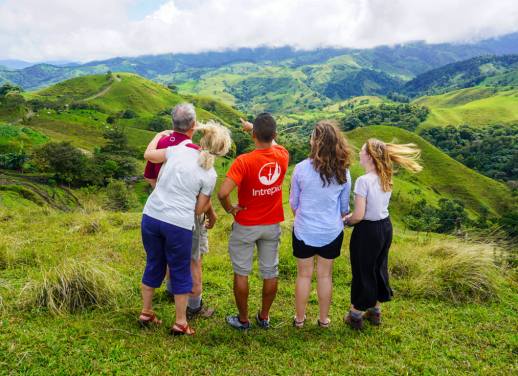Wedged between Guatemala and Honduras, scrappy El Salvador may just be Central America’s most underrated country.
While it can feel like must-see places across the globe are slowly succumbing to huge crowds and over-tourism, El Salvador seems to have escaped this fate. Although largely due to its unsavoury reputation for past violence and civil war, El Salvador has struggled to attract travellers who often overlook this little country in favour of the ecotourism resorts of Costa Rica or the Mayan sites of Guatemala.
But these days, El Salvador is safe and undergoing a tourism transformation, boasting world-class surfing beaches, hikeable volcanoes and wildlife galore. Salvadorians are warm and eager to share their country and open to conversations about overcoming turmoil. And in my opinion, well worth a visit.
Our El Salvador trips
So, in keeping with the country’s official tourism slogan: “Don’t Skip El Salvador,” here are six unique experiences that’ll have you itching to book a flight.
1. Hang 10 on the coast
El Salvador is quickly becoming a hot spot for surfers as everyone from backpackers to pros converge on the Pacific Coast for epic swells, tropical temps and cheap accommodation. El Salvador’s beaches are flawless, and the south-facing coast produces near-constant swells with waves that are some of the best in Central America.
Depending on which beach town you choose, there’s a wave for everyone, from chilled-out, longboard-friendly breaks in El Cuco to the hollow barrels in La Libertad, home to a few World Surf League competitions. Lessons for newbies are cheap, and spending a morning perfecting your form and a lazy afternoon chilling in a hammock sure isn’t a bad way to pass the time.
Although not a surfer myself, I did spend hours upon hours each day just frolicking around in the bathwater temp waves. There’s something about swimming on the beach that makes you feel like a kid again… until you walk back to shore for a piña colada. Then it feels really good to be an adult.
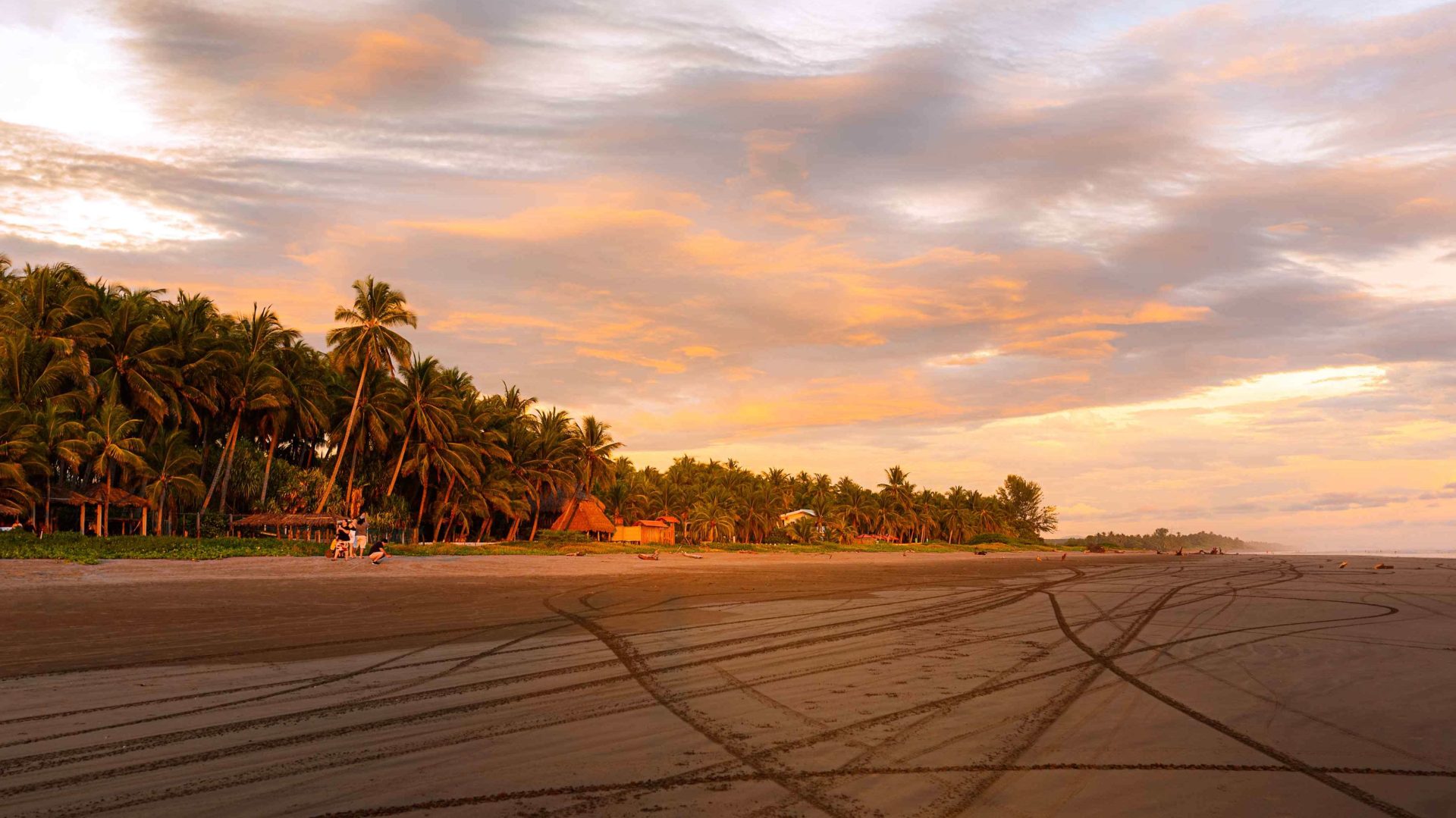
2. Learn the art of making pupusas from a local
Corn is not only a staple in the Central American diet; it’s a cultural symbol and connection to indigenous cultures. In El Salvador, corn is the backbone of the country’s signature dish: pupusas. Pupusas are thick corn tortillas stuffed with various fillings, like cheese, beans, chicharron or squash, and they’re readily available, ridiculously cheap and extremely filling. They can be found at most restaurants, but the best option is to saddle up to a pupuseria and order a couple fresh off the flat-top grill. They’re usually served with curtido, a Salvadorian slaw made up of fermented cabbage, onion, carrot and jalapeño, and a thin salsa roja.
In Suchitoto, we had the pleasure of learning to make our own pupusas in the kitchen of a local restaurant. The process starts with preparing the “masa” or dough, followed by stuffing them with whatever filling your heart desires… the possibilities are endless, but I went for a mix of pork, jalapeños and cheese. A little fat on the grill and a few minutes per side, and you’ve got yourself a pupusa. Most of the ingredients can be found at your local grocery store, so once you’ve got the technique down, pupusas are the perfect snackable souvenir.
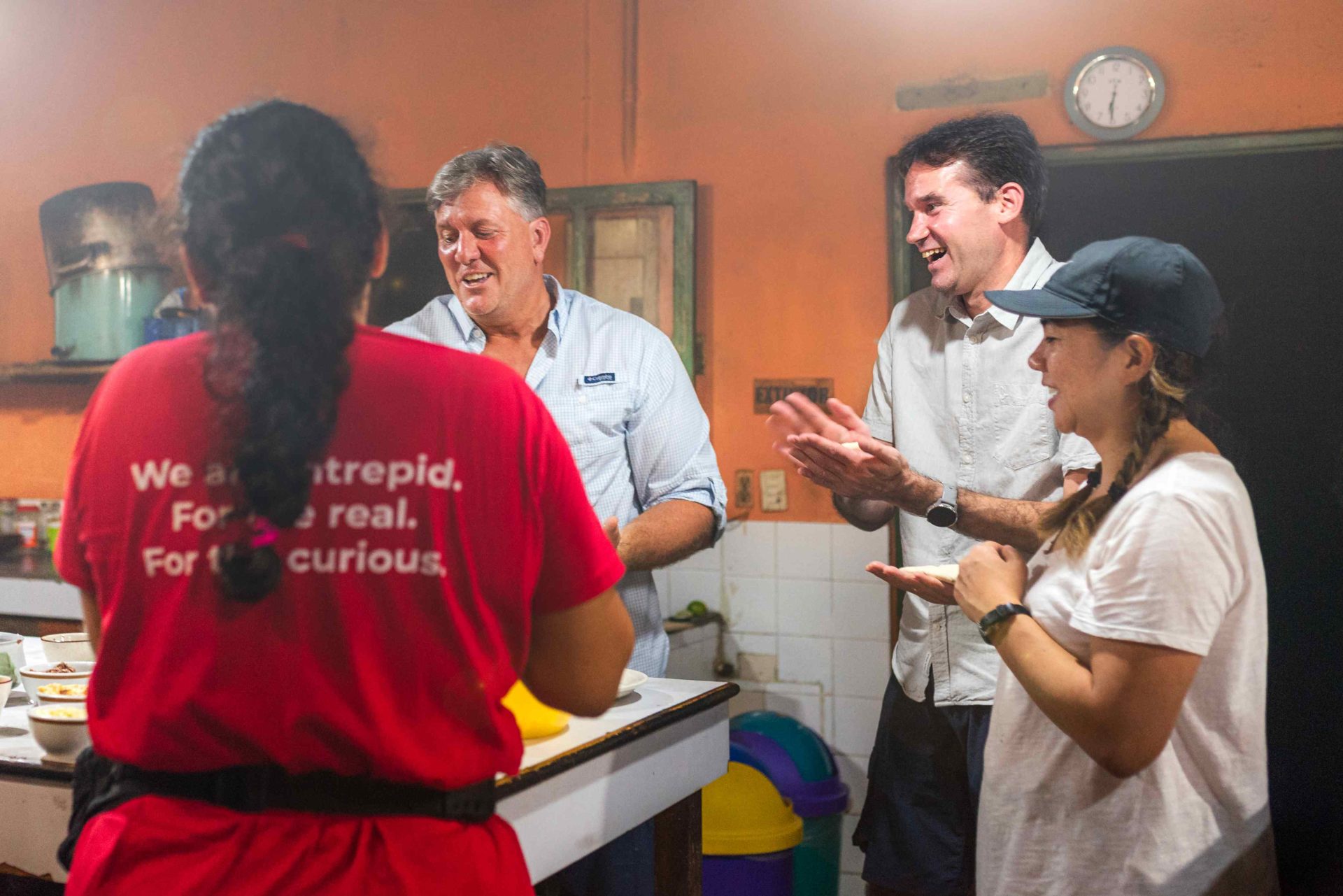
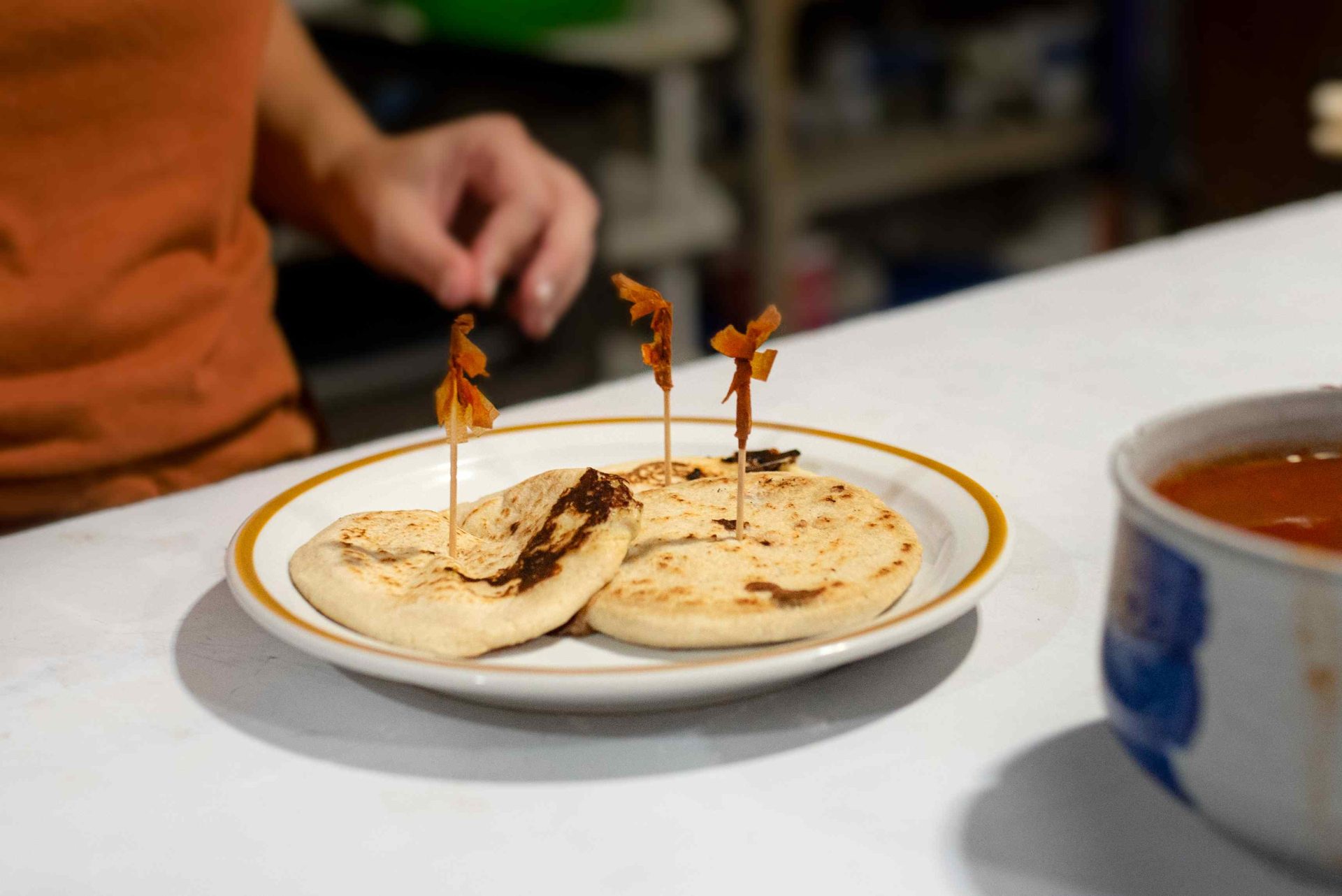
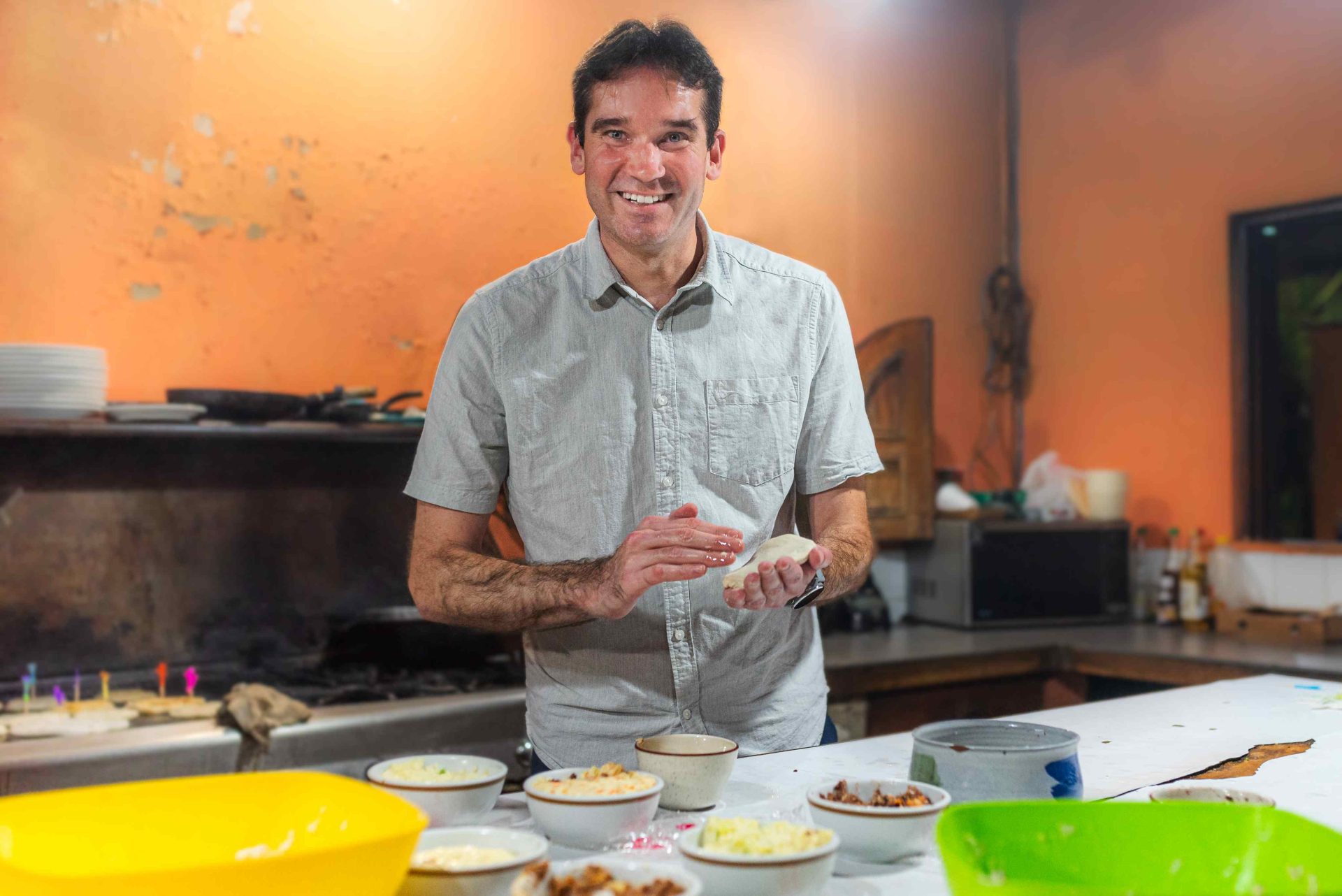
3. Visit the historic towns of Suchitoto & Cinquera
Suchitoto, the old capital of El Salvador, is one of the most well-maintained, charming towns in the country. Located in the highlands, Suchitoto is bursting with historic architecture. A bustling central square sits in the shadow of the brilliant white Iglesia Santa Lucía, while the surrounding cobblestoned streets are lined with painted buildings in pastel colours. The village is in exceptional condition, and it’s hard to believe that in the 80s, Suchitoto and the surrounding landscape were a battle zone at the centre of the country’s civil war.
We took a short trip outside of Suchitoto to the small town of Cinquera, a former guerilla defence site notorious for devastating civilian massacres. The main square, since rebuilt after multiple bombings, serves as a memorial of sorts, displaying the tail end of a US military helicopter and dozens of assault rifles from combat.
A nearby church with a bullet-riddled bell tower features a mural with painted quotes from Archbishop Oscar Romero and priest Rutilio Grande, alongside the names of Cinquera residents killed in the war. Out front, the priest calls for mass by using 1000-pound unexploded bombs as bells. As fortunate as we were to visit this town, we were even more lucky that the locals were willing to share their stories and educate us on what life was like during those 12 years.
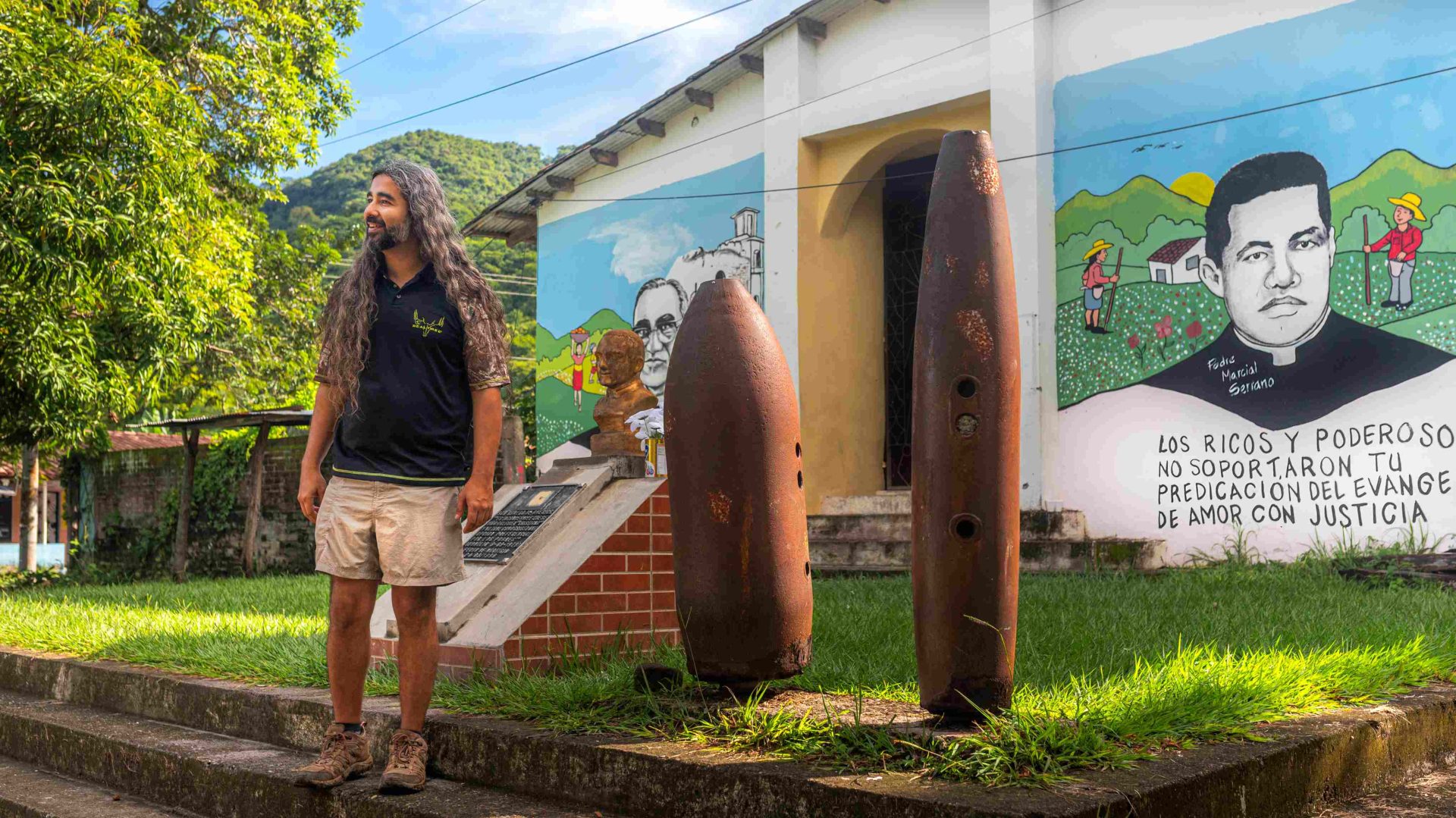
4. Meet a guerilla war veteran
Like so many other developing nations, El Salvador has been plagued by civil war in the not-so-distant past. For over 12 years, the country was embroiled in a violent conflict that sent guerrilla militias deep into the jungle to fight for survival against military-backed government fighters. At the end of it all, over 80,000 Salvadorians lost their lives, and the destruction was extensive. The El Salvador of today is still recovering and rebuilding from the devastation it faced 30 years ago.
On our trip to Cinquera, we were lucky enough to meet and chat with Rafael Hernandez, aka Don Rafa, head park ranger of the Cinquera Forest and ex-guerilla fighter. Easygoing and sporting the biggest smile I’ve ever seen, you’d never guess his story was so horrific… until he lifts his pant leg to display a deep, faded scar. Don Rafa was 16 when he joined the guerilla fighters in 1979, spending the next decade fighting and training other guerillas in survival outside of his home village of Cinquera. He was shot in an ambush in 1988 and spent the next few years moving from village to village until the war came to an end in 1992.
Today, a group of former FMLN guerillas and their families are dedicated to preserving the forest that Don Rafa says saved their lives many times. What once was a gruesome wartime site is now a serene ecological park. As someone who grew up in the 90s with little perspective of war or strife, it was an honour to listen to Don Rafa speak. It doesn’t matter how many books you read or podcasts you listen to; hearing first-hand stories from the mouth of someone who lived it is an experience like no other.
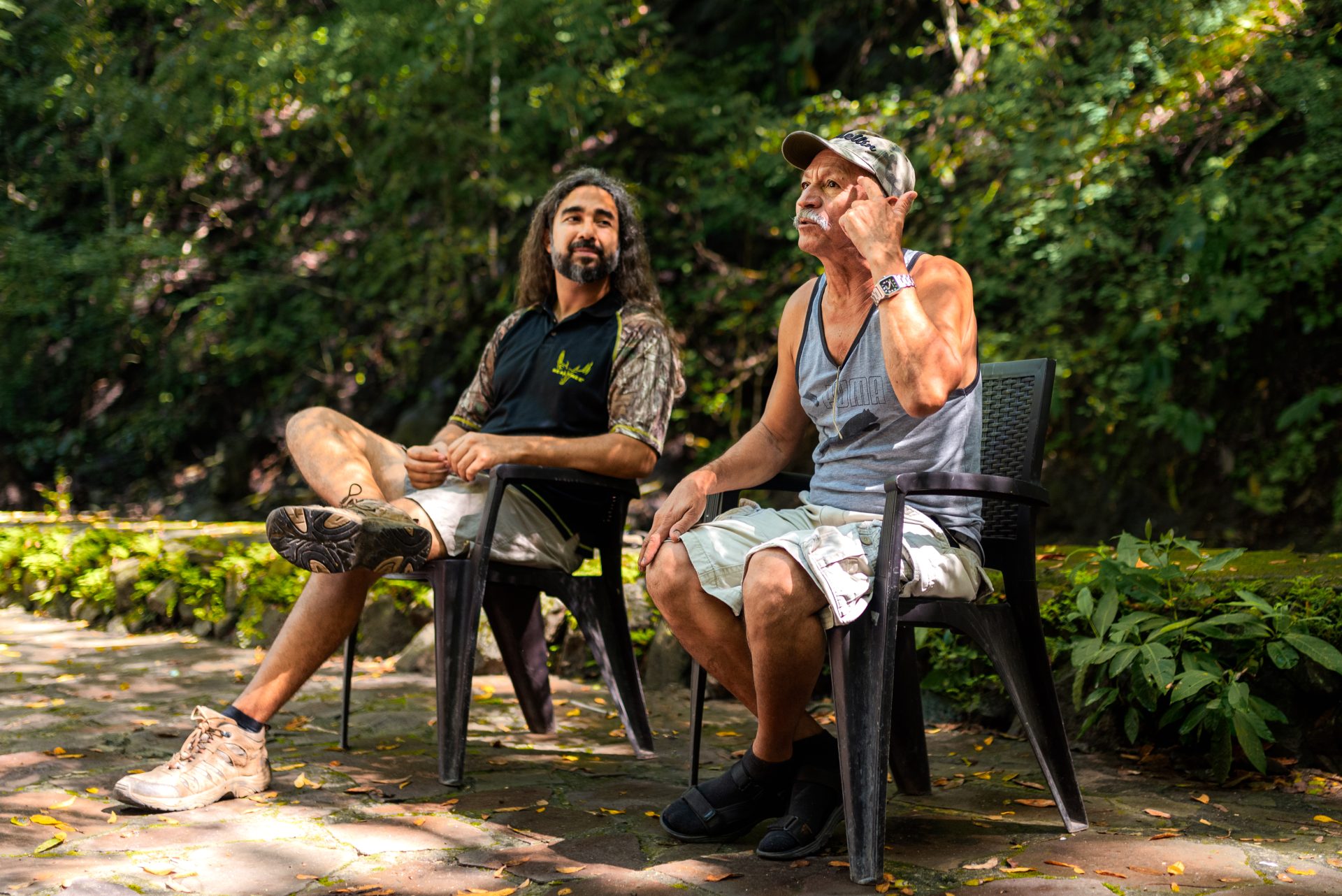
Our El Salvador trips
5. Hike in the country’s second-largest nature reserve
A hike through Don Rafael’s beloved Cinquera Forest is a must. As the second largest nature reserve in El Salvador, the rich landscape has impressive flora and fauna, from moonflowers to mushrooms and orchids to wild ginger root. Our machete-wielding guide led us through the jungle to see the ruins of guerilla trenches, campsites, a hospital, and a Vietnamese-style kitchen.
In the mid-80s, there were seven civilian massacres around Cinquera, and the government would bomb the area multiple times daily. The guerillas had to find new ways to survive out of sight of the Air Force, and Don Rafa explained that they trained with someone from Vietnam who taught the guerillas how to build kitchens that would circulate smoke down through a channel and into the ground so they could cook undetected.
A steep climb up to a fire lookout tower treated us to killer views across Lake Suchitlan, and a quick dip in a waterfall-fed swimming hole was the perfect respite from our hot and sticky jungle adventure.
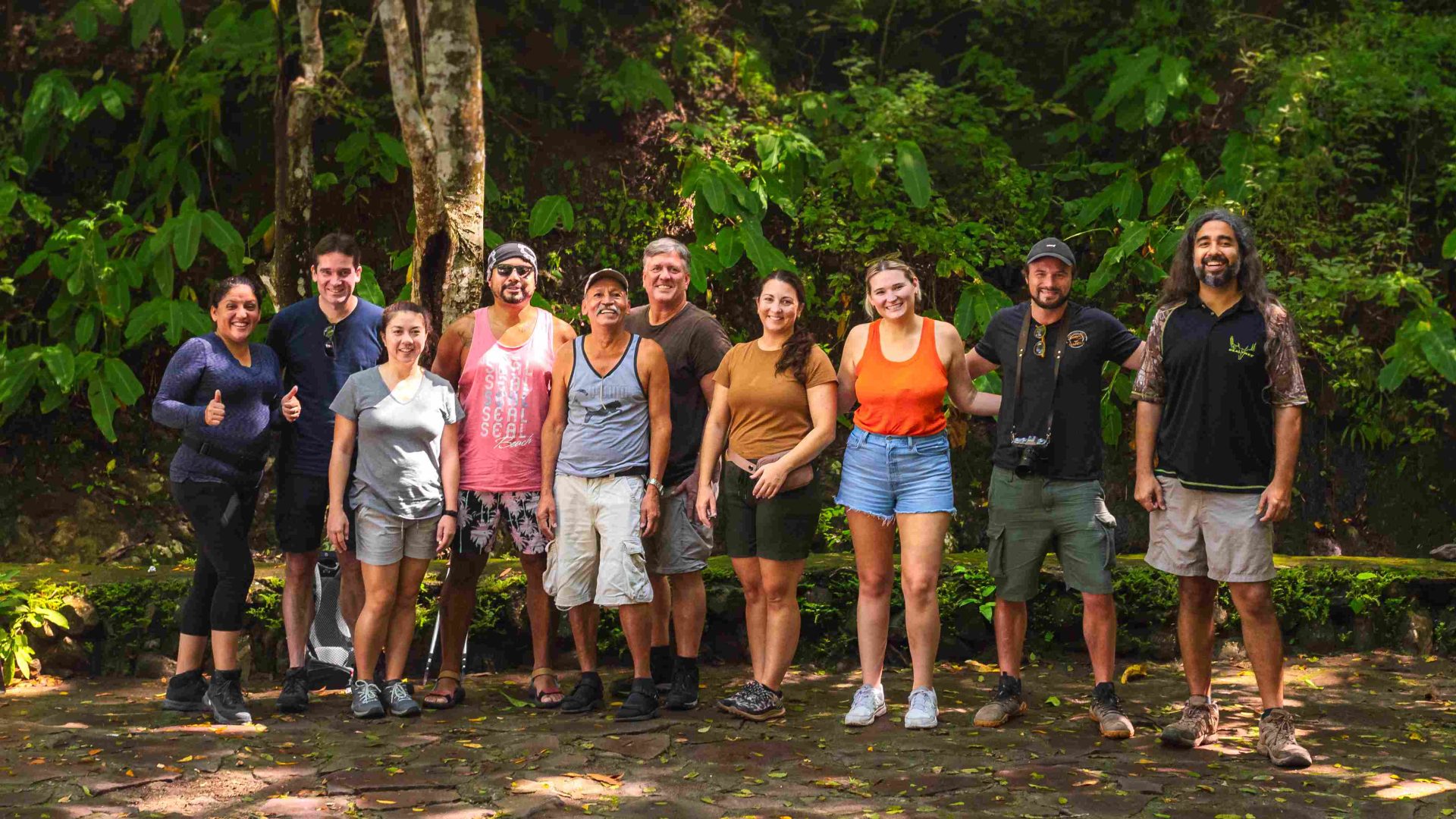
6. Go birdwatching on Lake Suchitlán
I am undeniably *not a bird person*. In fact, my group had to beg me to take this tour with them. But then I found myself on the lake, binoculars in one hand, camera in the other, spotting these birds like I would get a trophy at the end (although it might have had something to do with the fact that my love for boats outweighs my fear of birds). And gliding on our little boat, nothing but wild lilies on the water’s glass-like surface in front of us and a golden sunset behind us, I might, just for one second, have become a bird person.
Lake Suchitlán is the largest freshwater lake in El Salvador that provides habitats for tons of native and migratory birds, which can be seen by the thousands on the aptly named “Bird Island”. According to our guide, we spotted cormorants, herons, kingfishers and ospreys, and I can say first hand you don’t have to be an ornithologist to appreciate a cool bird. From afar, of course.
Bonus: Dany, our local guide and head birder in charge is not only excellent at leading tours… he’s a heavy metal rock star as well.
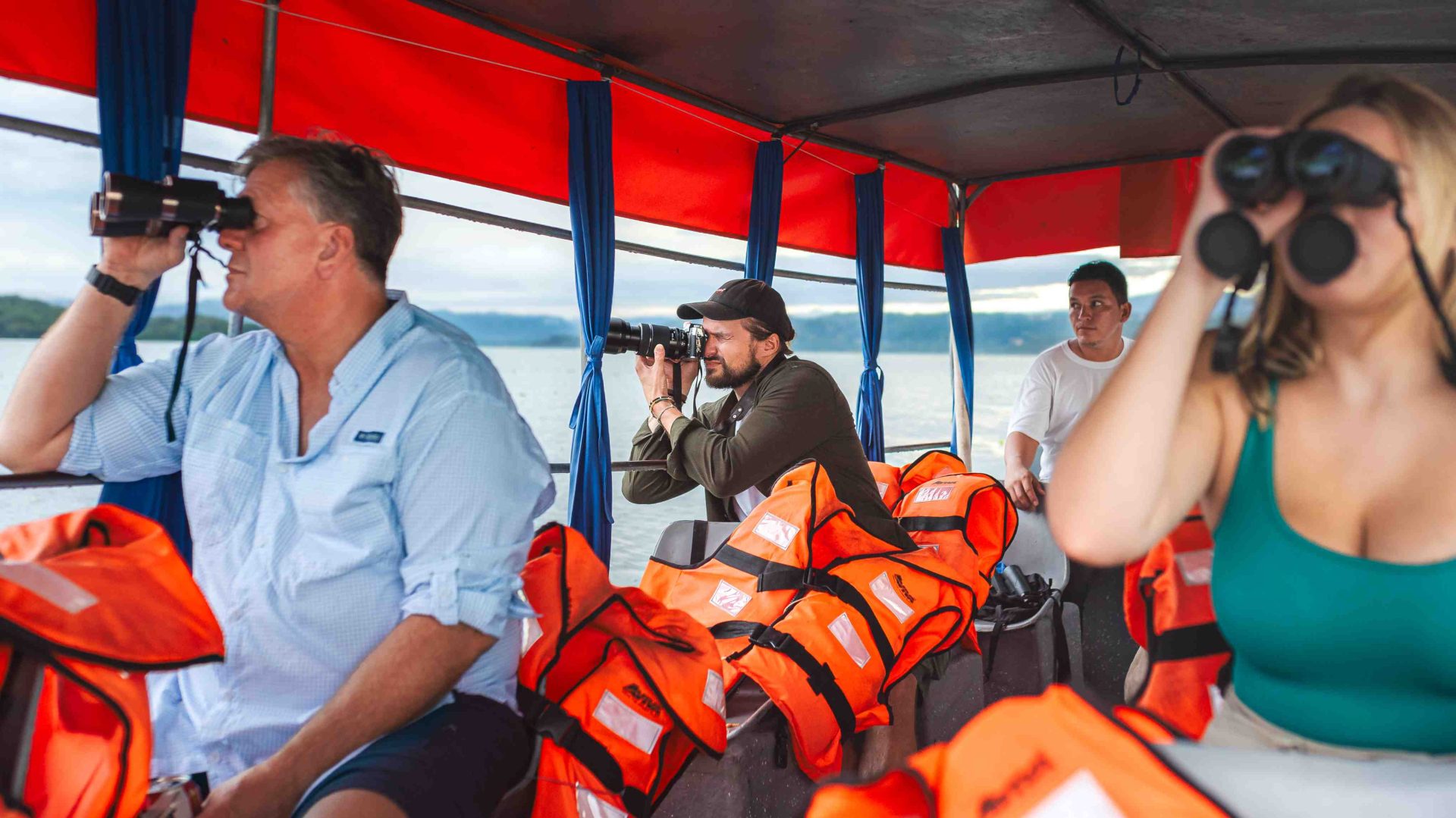
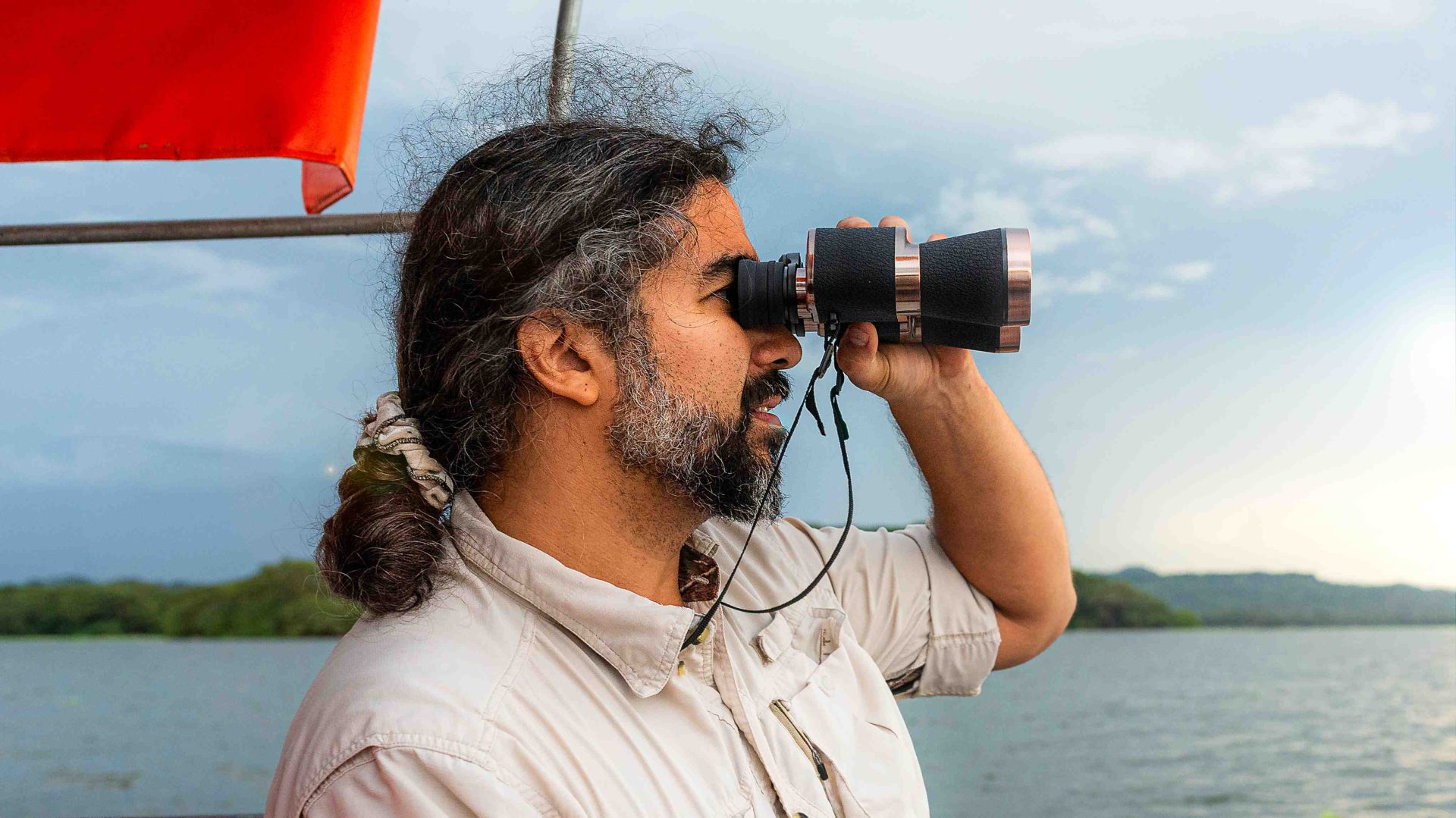
I wasn’t prepared to fall in love with the landscapes of El Salvador, but my few days here turned out to be one of my favourite travel experiences ever. The best part about visiting such a tiny country is you can see so much in a short time. Bouncing between historic cities, hanging out on tropical beaches, meeting some of the friendliest locals in the region and putting down record numbers of pupusas, I’m so glad I didn’t skip El Salvador.
Follow our footsteps on Intrepid’s 10-day Nicaragua & Beyond trip.

